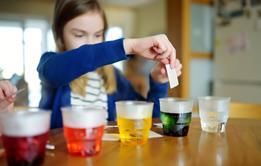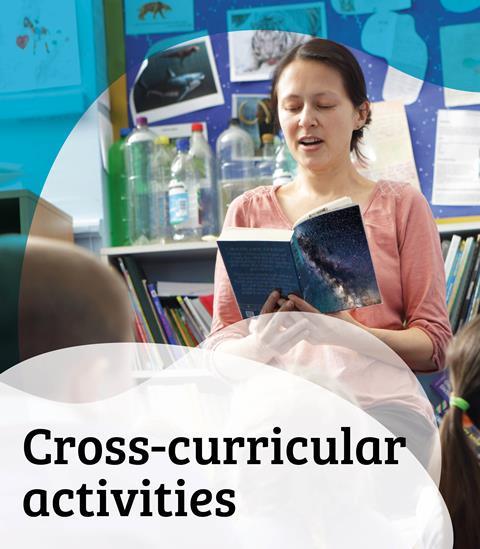Milk is great for healthy teeth and bones, but it can also be used to introduce scientific principles, this experiment teaches surface tension
In this video, education coordinator Rosie demonstrates how to investigate surface tension using food colouring and milk to create colourful patterns. This simple activity can be set for learners to try at home with a responsible adult or used as a classroom experiment.
Equipment list
- Milk (any type)
- A shallow dish
- Food colouring
- Washing-up liquid
- A paintbrush or cotton bud
- A straw
Health and safety
- Don’t drink the colourful soapy milk.
- Food colouring may stain.
Activity instructions
- Pour the milk into the dish. If you use a shallow dish you only need a little bit of milk.
- This experiment works best if you mix a little bit of food colouring with some milk and add it to the dish with the straw. Dip the straw into the coloured milk and keep your finger over the end of the straw, then release your finger to add the colour to the dish. Try to add the colours carefully and leave a little gap between them so they don’t mix up.
- Put some washing-up liquid onto a paintbrush, cotton bud or your finger if you don’t mind getting messy.
- Place the paintbrush in the middle of the milk and food colouring. See what happens to the colours.
Explanation
When the paintbrush touches the milk, the colours quickly swirl away from the washing-up liquid. The colourful patterns created are all thanks to the soap breaking the surface tension of the liquid.
Milk is an emulsion of fat in water and all the water molecules in the milk are strongly attracted to each other. At the surface there is air above the milk so the water molecules are not completely surrounded by each other. This makes them even more strongly attracted to each other at the surface, which creates a kind of skin on the liquid. This is known as surface tension. The washing-up liquid weakens the forces between the water molecules and breaks the surface tension, causing the food colouring to mix and make the tie dye milk.
In the video, semi-skimmed milk is used but the patterns can also be created using milk with other fat content or milk alternatives, and even water. Ask your learners to explore the differences that arise when different types of milk are used. They can also investigate whether all food colouring will work or if there is a particular colour that works best. When repeating the experiment replace the milk in the dish and make sure there is no soap remaining on the dish.
Also check out
- Colour chemistry, with instructions for similar experiment (‘Multicoloured milk’), teaching notes and a student worksheet.
- More simple experiments using everyday equipment which your learners can try at home or you can bring to the classroom on our YouTube playlist.
- Read the CLEAPSS guidance on practical activities for pupils at home during extended periods of school closure, GL339.
- Read the SSERC guidance for primary home learning.
Downloads
Investigating surface tension with milk teacher notes
Editable handout | Word, Size 88.4 kbInvestigating surface tension with milk teacher notes
Handout | PDF, Size 33.42 kb
From kitchen to classroom

Simple chemistry experiments using kitchen cupboard equipment. Use in the classroom or set as an activity for learners to do at home with a responsible adult.
- 1
- 2
- 3
- 4
- 5
- 6
- 7
 Currently
reading
Currently
reading
Investigating surface tension with milk
- 9
- 10































No comments yet